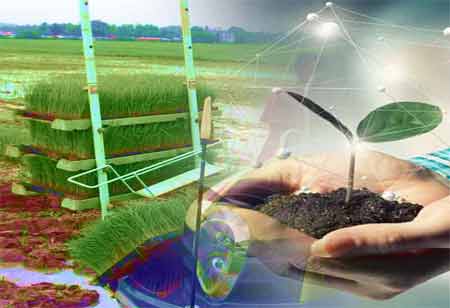Thank you for Subscribing to Agri Business Review Weekly Brief
How Drones Help Precision Agriculture?
Precision agriculture involves strategically rotating crops and planting them in more efficient ways by using sensors and analytics tools.

By
Agri Business Review | Tuesday, May 09, 2023
Stay ahead of the industry with exclusive feature stories on the top companies, expert insights and the latest news delivered straight to your inbox. Subscribe today.
The advantages of Drones in Precision Agriculture are it helps in Crops surveying and mapping, enhance worker safety, assist in soil inspection, and increase crop yields.
FREMONT, CA: Precision agriculture involves strategically rotating crops and planting them in more efficient ways by using sensors and analytics tools.
Precision agriculture can increase crop yields and reduce water, pesticide, and fertilizer usage. Farmers and providers can both benefit from precision agriculture by making farming more sustainable, profitable, and successful.
How Do Drones Play a Role in Precision Agriculture?
The benefits of precision agriculture for farmers are enormous, but there is a catch. Precision agriculture requires a steady flow of data in order to be effective. This is where drones come into play.
Drones are increasingly being used by agriculture providers to monitor crops and collect data. As environmental conditions change, drones can help growers navigate changing environmental conditions and maximize yields by observing large areas of land.
A few ways agriculture providers are using drones to streamline their operations are listed below.
Planning for irrigation: Irrigation plays a crucial role in crop production. To track irrigation system effectiveness, farmers must carefully plan irrigation systems and analyze water distribution.
Farmers can also use drones to gain new insights into irrigation systems, monitor their effectiveness, and make strategic changes to improve water flow.
The planting process: Land elevation and slope can be collected by drones very effectively. Over time, farmers can analyze this data and use it to determine where to plant before the growing season begins.
A security system: It is crucial for farmers to keep a close eye on their crops to prevent theft and damage from people and wildlife. It is not an easy task, especially when managing hundreds or thousands of acres at once.
In order to improve security, more farmers are using surveillance drones that can cover large areas and fly for longer periods of time. A drone can capture detailed aerial footage and get close to unauthorized individuals. Additionally, they can communicate with security systems and wildlife deterrent systems to track intruders.
Distribution of resources: Depending on the soil, sunlight, and temperature, crops can have highly complex growing requirements.
A drone can be used by farmers to track crop fertility and to determine where fertilizer and pesticides should be applied. Through the use of this data, it is possible to achieve greater consistency and maximize production.
Monitoring sustainability efforts: Growing sustainably and reducing environmental harm is under increasing scrutiny from government agencies, watchdog groups, and consumers. Therefore, farmers must back up their sustainability efforts with actual data. In order to demonstrate compliance, this is crucial.
Drones can collect data and provide accurate records on water consumption and crop rotation for this purpose. The availability of this type of data can make it easier for farmers to partner with eco-conscious distributors. In turn, this could lead to better reviews, more recommendations, and higher profits.
Below are some of the significant benefits of Precision Agriculture Drones:
Enhances crop yield: Nowadays, growers need to track a variety of metrics, including chemicals per output, yield per plant, water per output, and estimated production potential. In smaller operations with fewer employees, this can be difficult. It is often difficult for farmers to devote time to tracking analytics.
Using drones and farming software, farmers can automate data collection and gain powerful insights. Crop yields can be optimized using this data.
Cost-savings: There are many expenses associated with farming, including fuel, oil, water, electricity, rent, and insurance. Due to this, farmers usually have tight budgets and rely on loans and grants to get by. Wasteful spending is not acceptable.
While drones require capital investment, they are relatively low maintenance, making them affordable and very useful-accessory for serious farmers. Farmers can avoid wasting precious resources by using drones to track resource distribution.
Disaster response: There are many different causes of agricultural disasters, including fire, flooding, land movement, and drought. It is essential for farmers to have systems in place to identify disasters when they occur and to respond so that damage can be mitigated quickly.
Farmers can plan and respond to incidents whenever they arise with the help of drones before, during, and after disasters. Drones may be used by farmers after a fire or flood to assess damage over a large area and plan an appropriate response. It can be useful for gathering information about unsafe areas to travel on foot or by motor vehicle.





